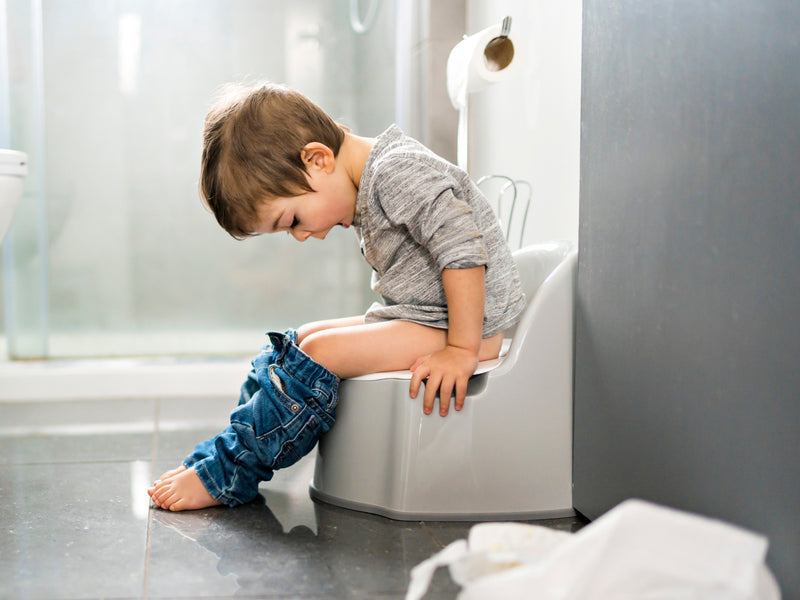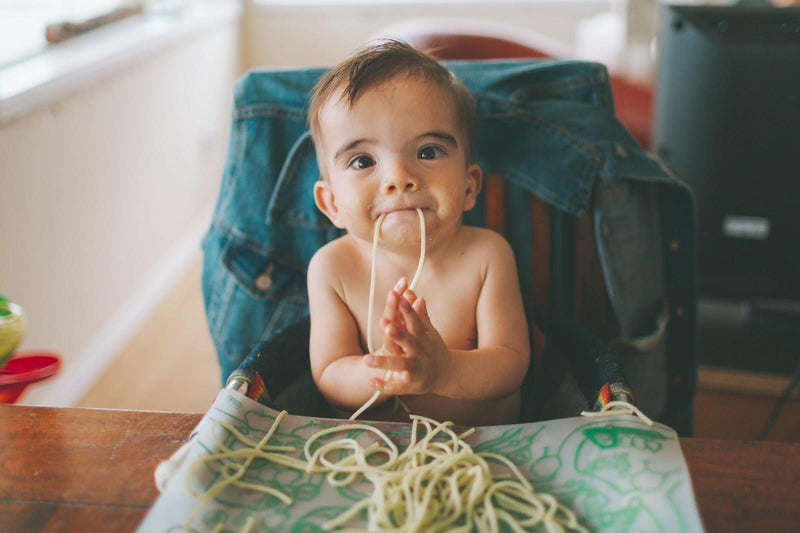
Before a baby is born, parents buy everything they need to welcome their newborn. One of these essential products is diapers! However, not everyone knows what size, model, and brand to choose. The comfort and well-being of the baby depend on the choice of diapers and whether they are suitable to the baby’s age and weight. Reusable diapers are much more convenient than disposable ones in this regard. This article serves as a diaper size guide for your baby.
Why is it important to buy the correct diaper size?
It is important to buy the correct diaper size so that it adequately absorbs the baby's urine and poop without causing diaper rash and, at the same time, allow some freedom of movement. The weight of the baby and the material of the diaper are therefore factors to consider when buying baby diapers.
How do baby diaper sizes work?
Baby diaper sizes work according to the dimension of your baby. Producers of regular baby diapers often aim at making their size generic which can be problematic for certain little ones. The true test is to try them on and see if they are loose around your baby’s waist and if the fabric is adequate.
On average, a newborn baby can use up to ten diapers a day in the first weeks of life. Sometimes, due to inexperience and over-caution of parents, they tend to overdo diaper changes. However, the truth is that the diaper should only be changed when it is really necessary or when you see that the baby has soiled the diaper.
As weeks go by, mothers begin to understand when it is time to change their baby's diaper. In the first months of growth, the baby will gradually learn to retain poop and urine, so the mother will reduce the changes to 5 to 6 times a day and then only change the diaper while they sleep. One of the most common problems for babies is the risk of dermatitis, as they have quite sensitive skin. The trapped moisture in the diaper cannot sweat away, which can lead to skin irritation, diaper rash, or yeast infections.
How to choose your washable diapers
Diaper Size and Weight Chart Guide
Diaper packages always show a diaper size guide and weight chart guide. However, despite some slight differences between different brands, there are standard baby diaper sizes:
Size 1: 2-5 kg for the birth and the first days
Size 2: 3-6 kg during the first months
Size 3: 5-9 kg from the second month
Size 4: 7-18 kg from 5/6 months
Size 5: 11-25 kg after one year of life
Size 6: more than 16 kg and until the moment of removing the diaper
Choosing the size of diapers based on your baby's weight is not enough, which is why you should also evaluate the fit and absorbency of diapers based on your baby's needs. It is always better to choose a size slightly larger than the one that is too tight. By slightly tightening the waist, the size of the diaper can be adjusted.
The classic trick to tell if the diaper is too tight is to place two fingers between the elastic band and the baby's tummy. You should never see a red mark on your baby's tummy, otherwise, it means the diaper is too tight or it's time to change the diaper size. The bottom of the diaper should also be soft enough to allow room for stool and not stick too closely to the baby's skin.
The Ultimate Newborn Checklist
H2: How to know if you have chosen the right diaper size
To determine if you have chosen the right diaper size for your baby, you should check the following boxes:
The diaper wraps your baby, without being too tight.
Between one change and another, the baby's intimate areas are perfectly clean and dry.
The baby has absolute freedom of movement and feels comfortable.
How to know if it’s the right time to change your baby’s diaper size
To know if it’s the right time to change your baby’s diaper size, follow these 4 tips:
Read the instructions written on the diaper package
Follow the standard diaper size table
Observe the baby
Inspect your baby’s skin
1. Read the instructions written on the diaper package
It is not a certified method but it can help parents find out what size to use during the baby's growth.
2. Follow the standard diaper size table
Taking as a reference the weights and age groups indicated in the tables above can help you understand which way to go.
3. Observe your baby
This is the most reliable method because no diaper sizes are suitable for the same age and weight of each baby. The physiognomy of each baby is a very important factor to take into account, so it is always better for parents to monitor their child and understand if the chosen diaper absorbs enough, if it is too tight or too loose, etc.
4. Inspect your baby’s skin
If the diaper leaves marks on your baby’s skin, it means that the size is not big enough and you have to move on to the next one. It is also not a good sign if the diaper is too tight at the bottom, since the skin will be irritated due to the stool being in direct contact with the baby's skin. In case you notice this, you have to change the size.
How do you prevent leaks and blowouts?
Diapers leak because the pressure on the beads can push the water out of the polymer. Most manufacturers counteract this problem by increasing the crosslink density of the carcass around the cord. A stronger shell allows the pearls to retain water under pressure. However, leaks occur mainly because urine is not pure water.
You can pour a liter of water into a diaper without spoiling it, but the diaper itself probably cannot absorb a liter of urine, as urine contains salts. This means that there will be salts on the outside of the polyacrylate molecules and the inside, so the sodium polyacrylate will not be able to absorb all of the water before the sodium ion concentration balances. The more concentrated the urine, the more salt it contains and the less the diaper will last.
The best way to prevent leaks and blowouts is to choose the correct diaper size, maintain an appropriate schedule, change them often, put the diaper on correctly, and put on overnight diapers or booster diapers in some cases.
Changing diapers: before or after meals?
Almost all mothers know how to adjust the diaper change a few days after the baby is born, but they are not so clear if they should change it before or after feeding them. Many babies sleep on their backs so it is recommended to change their diapers before each meal. This way, your baby can sleep clean and you can have a moment of relaxation with him without rushing to change the diaper right away.
However, to make the right decision, you must understand your baby and his habits, as some babies relieve themselves immediately after being fed, so it is useless to change them in advance.
How often should you change a newborn's diaper?
Dry diapers can prevent skin irritation and redness. That is why in the first months, diapers are changed very frequently after feeding the baby, approximately every 2 or 3 hours. As your baby grows and you learn more about him or her, changing diapers will become completely natural and easy. Your bond will grow stronger and you will know exactly when to change it.
Making the diaper change a calm and fun moment is essential for the newborn and the parents. For this, try to be gentle but fast so that the baby does not get cold. Make sure to communicate with him/her while you are making the change. A good idea is to hum a song or make faces to reassure your baby. Cuddle your little one so that he/she feels safe and loved!
Find the right baby diapers
If you are evaluating which baby diaper to choose for your baby, we highly recommend opting for eco-friendly disposable diapers or reusable cloth diapers.
The advantages of using washable diapers have to do with the health and well-being of the child, but not only that:
Being made of cotton, they allow the baby's skin to breathe.
They are completely free of chemicals that can cause irritation and redness.
They are manufactured sustainably, taking into account the health of the environment because it avoids the destruction of hectares of forest, the production of polluting materials such as plastic and other chemicals and the overproduction of water is avoided.
One-size cloth diapers, swim diapers, newborn cloth diapers, and big size cloth diapers… We have them all!
Save Money With Washable Diapers




